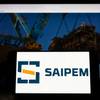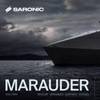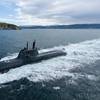Austal, MTU: Power on Display in NYC
According to a survey conducted by the Volpe National Transportation Systems Center in Cambridge, MA, high-speed ferries account for only 10% of the overall national US ferry fleet. With the option of taking cars, buses and trucks on board, more and more coastal and waterway communities will demand fast ferry transportation to keep traffic afloat.
With an estimated travel time of 2 hours and 15 minutes, the Spirit of Ontario will provide a safe, reliable and stress free alternative to driving, and cut commuter time by over 50 percent. RoRo capabilities allow for a fast loading of the two vehicle decks. The two passenger decks are equipped with business travel amenities such as restaurants, bars, two movie theatres, and a variety of seating arrangements as well as satellite TV and Internet access.
While the companies touted the incredible commercial potential of this vessels and similar ones to serve ever more congested metropolitan areas, the ship’s value as a naval asset was readily apparent.
The super ferry is an outstanding example of high-speed vessel technology. The four MTU 20V Series 8000 cylinder diesel engines deliver a total propulsive power of 44,000 HP (32,800 kW) at a rated speed of 1150 rpm. The fuel consumption is below 195 g/kWh across a very broad power range and less than 190g/kWh at the most economical point, while keeping NOx emissions below the limits required by IMO (International Maritime Organization).
“High power density, advanced technology, reliability, and expert service and support are the most important criteria to high-speed shipbuilders”, explained Bernard Bentgen, Vice President, Marine Sales in NAFTA for MTU. “MTU is the world’s leader in innovative high-speed engines. Our clients have opted for our high quality products for decades, making us the market leader in the high speed marine business.”
Austal has already built well-over 80 fast ferries for customers all over the world, each of them tailored to the client’s specific needs. The company’s US shipyard, Austal USA, was established in 1999 to bring the company’s aluminum shipbuilding expertise to the US commercial and military markets, providing new possibilities for passenger transport operators in the process.
“Austal USA has already successfully completed six vessels including two high speed passenger catamarans that are operating here in New York,” said Chris Pemberton, Vice President, Sales and Marketing for Austal USA. “We now have the capability to produce vessels such as ‘Spirit of Ontario 1’, which was built by Austal in Australia, here in the United States. In fact less than two weeks ago we launched our largest ferry yet, a 58-meter catamaran that will operate across Lake Michigan for Lake Express LLC.”
Future Projects
Austal and MTU have successfully partnered on a number of prestigious projects. This fall, Austal will launch one of the world’s largest high-speed ferries – a 126-meter high-speed trimaran accommodating 1350 passengers and over 340 cars – which will be taking up service in the Canary Islands for the Spanish ferry operator Fred. Olsen, SA. This breakthrough vessel, on which the Littoral Combat Ship design is based, will be powered by four MTU 20V Series 8000 diesel engines.
Four MTU 16V Series 4000 engines will also power the Lake Express ferry which has capacity for 248 passengers and 46 cars. With a speed of 34 knots, it will link the cities of Milwaukee, WI and Muskegon, MI in just over two hours, thus saving passengers a lengthy drive around the southern shore of Lake Michigan, including traffic congestion in Chicago.
Commercial and military organizations worldwide are gradually investing into high-speed vessel technology. High-powered multi-hull ships are the perfect candidate for public waterway transportation, coast guard and police patrols as well as military programs such as the Littoral Combat Ship or the Theatre Support Vessel.














